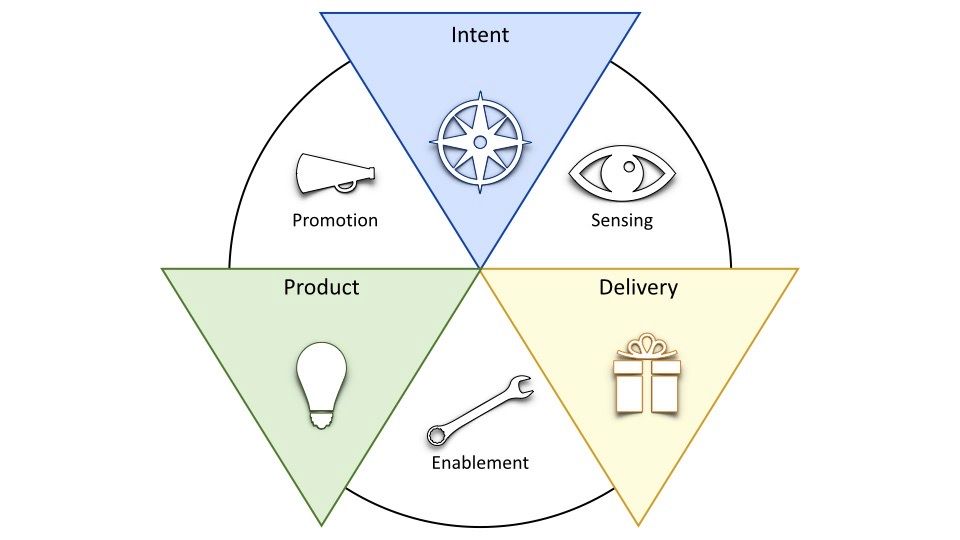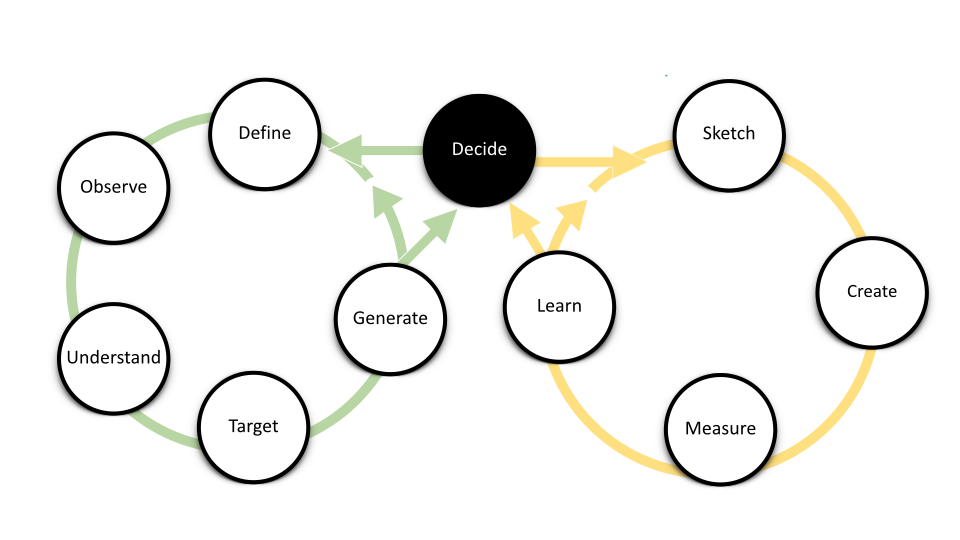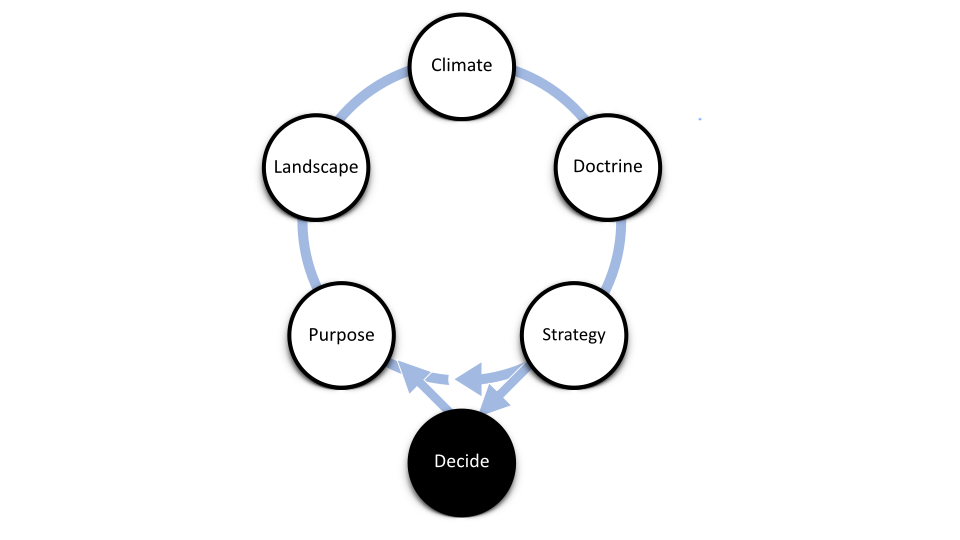 In the previous post I outlined an idea of the Cell as a possible building block for Adaptive organisations.
In the previous post I outlined an idea of the Cell as a possible building block for Adaptive organisations.
 Cell Capability Areas
Cell Capability Areas
The next question is obviously ‘how does a Cell operate?’.
In reality Cells will operate in a number of ways dependent on the level of Adaptiveness and the nature of the work being done by that Cell. However, I think it could be useful to illustrate what could be going on inside the Cell to help understand what Cells are about.
For this post, I will focus on the ‘critical path’ capability areas - Intent, Product and Delivery.
Let’s start with the more known aspects of the Cell, the product development aspect.
There have been many books written about product development, especially since Ideo popularised design thinking and Agile was defined. While I have developed a number of product design and delivery processes for clients, I thought it would be better to use a more widely available, and supported, description. The process I will use (slightly tweaked) is Gabrielle Benefield’s Mobius process for product development.
Note 1: Due to how long I have been toying with this idea, I have actually used an older iteration of Mobius. The version doesn’t matter. The process needs to fit the problem at hand and the nature of the work being done, so different Cells will use different approaches.
Note 2: While Mobius can be applied to strategy, I have chosen something else for the strategy piece in the Intent section below. The Cell’s Product and Delivery Capability Areas now look like this: Product and Delivery Capability Areas
Product and Delivery Capability Areas
Product - Define : Why are we doing this and who are we doing to for?
Product - Observe : What is really going on?
Product - Understand : What did we learn?
Product - Target : Identify product strategy and outcomes.
Product - Generate : Create options.
Delivery - Sketch : Consider how to deliver the chosen option(s).
Delivery - Create : Create the product, service or experiment.
Delivery - Measure : Understand the impact and effectiveness of the product.
Delivery - Learn : Consider what the measures tell us, how can we improve the product and/or customer satisfaction.
 Intent Capability Areas
Intent Capability Areas
Intent - Purpose : The reason for the Cell’s existence. The scope of what it is doing and why.
Intent - Landscape : The environment the Cell is operating in, including the position of competitors and partners.
Intent - Climate : The forces which impact the landscape. These include political and regulatory environment, as well as the direction of travel of competitors and partners.
Intent - Doctrine : The standard ways of operation, techniques and principles that almost always apply.
Intent - Strategy : The identified and chosen “battle at hand” given the specific context specified by the purpose, landscape, climate and doctrine.
This repeating consideration of strategy is a critical part of Adaptive organisations. Agile is very good at iterating product development, but if we want adaptive organisations we have to iterate the strategy; we need to continuously assess whether our current move is being successful, and whether there is an other move that we can/should make.
 Cell Capability Processes
Cell Capability Processes
Within a Cell, each Capability Area influences the others; our strategy influences the products, while our current products, and ability to create different ones, influences which strategies are viable. If we want different strategies to be possible we have to consider influencing our environment, changing our doctrine as well as our products.
Our Cell now continuously, and simultaneously, is considering it’s purpose, environment, appropriate strategy, the product(s) to deliver that strategy, the delivery and success of those products - it can adapt.